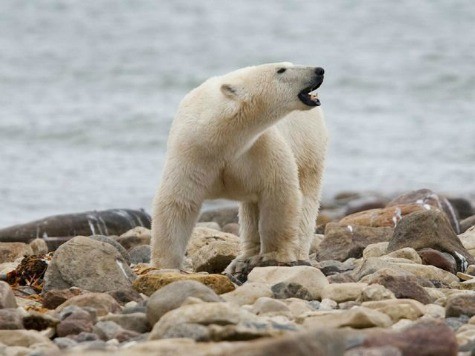U.S. laws protecting polar bears are based on a deeply flawed study that even the authors now admit has problems.
The decision to list the polar bear as “threatened” under the Endangered Species Act (ESA) was based on a 2006 study that said polar bear numbers had fallen, and the survival rate for cubs was declining.
But leading zoologist Dr Susan Crockford now says the study failed to take into account the fact polar bears can simply move outside the study area. If a polar bear could not be rediscovered after being tagged, it was assumed to be dead.
The group who conducted the study have themselves acknowledged this, admitting that the polar bear population may be faring better than they originally predicted.
As Dr Crockford writes on her blog:
What’s shocking is that the PBSG [Polar Bear Study Group] have now admitted that the ‘movement of bears’ issue essentially invalidates the 2006 population estimate and the much-touted ‘reduced survival of cubs.’ The reduced survival of cubs data from that SB study was a critical component of the argument that US bears were already being negatively impacted by global warming and thus, should be listed as ‘threatened’ under the ESA (US Fish & Wildlife Service 2008).
Ecologist Jim Steele also points out that the method used in the study is “impossible for highly migratory polar bears”:
Unlike other species that defend a territory with reliable resources, polar bears never defend territories. They walk and swim across great distances and will congregate wherever the Arctic’s ever-shifting food supply becomes most abundant.
Therefore, trying the measure the polar bear population in just one particular area makes no sense, as can simply move in and out the area.
Last year, a U.S. court reaffirmed the “threatened” status of polar bears under the Endangered Species Act, using the study to say that it could become endangered due to the impact global warming will have on its arctic habitat.
The U.S. Circuit Court of Appeals in Washington DC upheld the status, saying that criticism amounted to “nothing more than competing views on policy and science”.
The Alaska Department of Law, who wanted the “threatened” status lifted, argued that polar bears are pests who, as well as threatening towns, also threaten the exploration for gas and oil.
The LA Times reports that the Department wrote that the current law offers a vision in which “Alaska’s resources are locked up, our economy languishes, we lose population and we lack the capacity to maintain schools, roads, bridges, harbors and airports…. It is imperative that this latter vision does not become a reality.”
In the same article, the LA Times said: “There are still about 25,000 polar bears around the world, many of them in relatively healthy populations, but scientists fear that climate change is rapidly affecting their ability to sustain those numbers after the next half-century.”
Now those fears have been laid to rest, the basis for labelling polar bears as “threatened” is gone.
The question now arises of how much longer the U.S. government will continue to enforce a law that has no basis in fact.

COMMENTS
Please let us know if you're having issues with commenting.